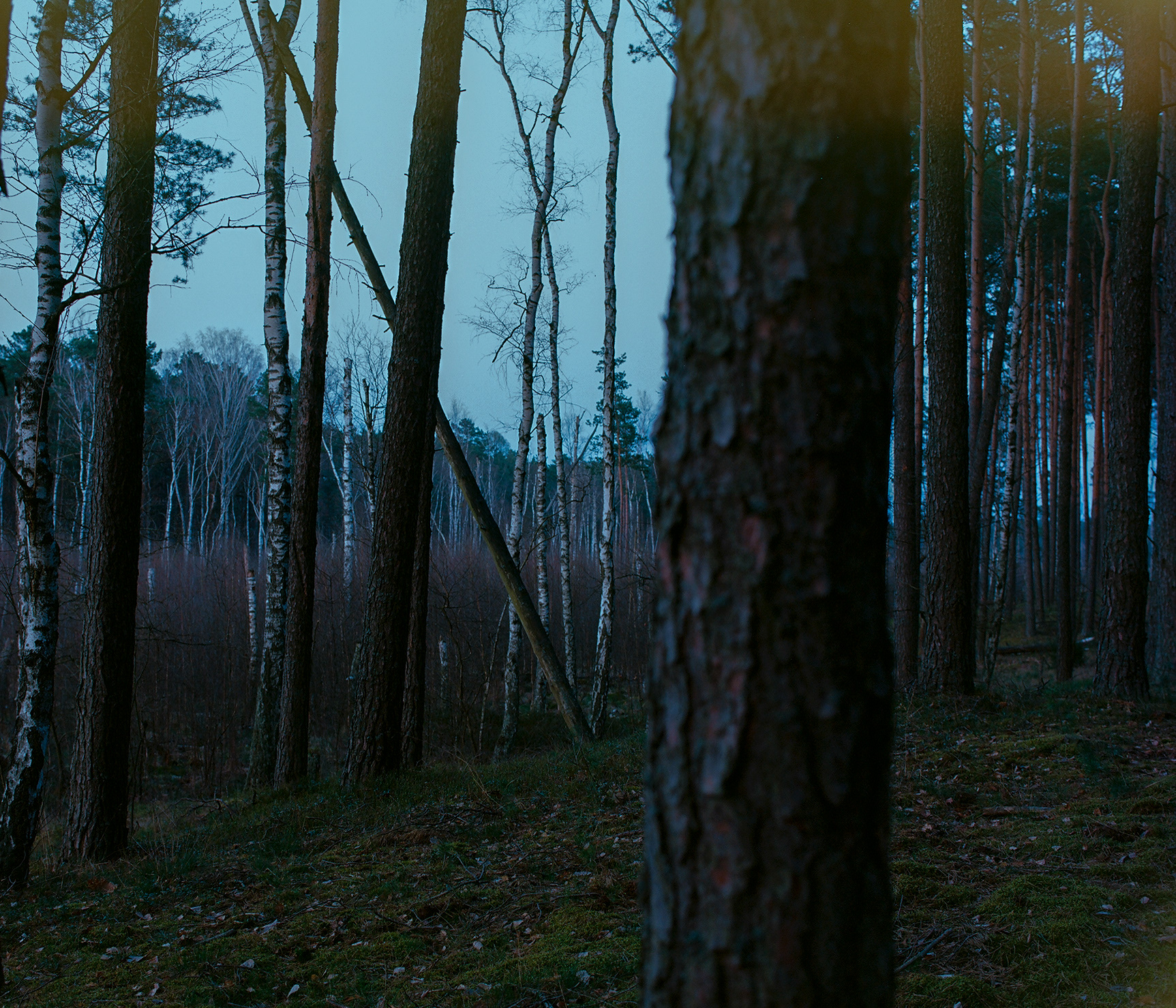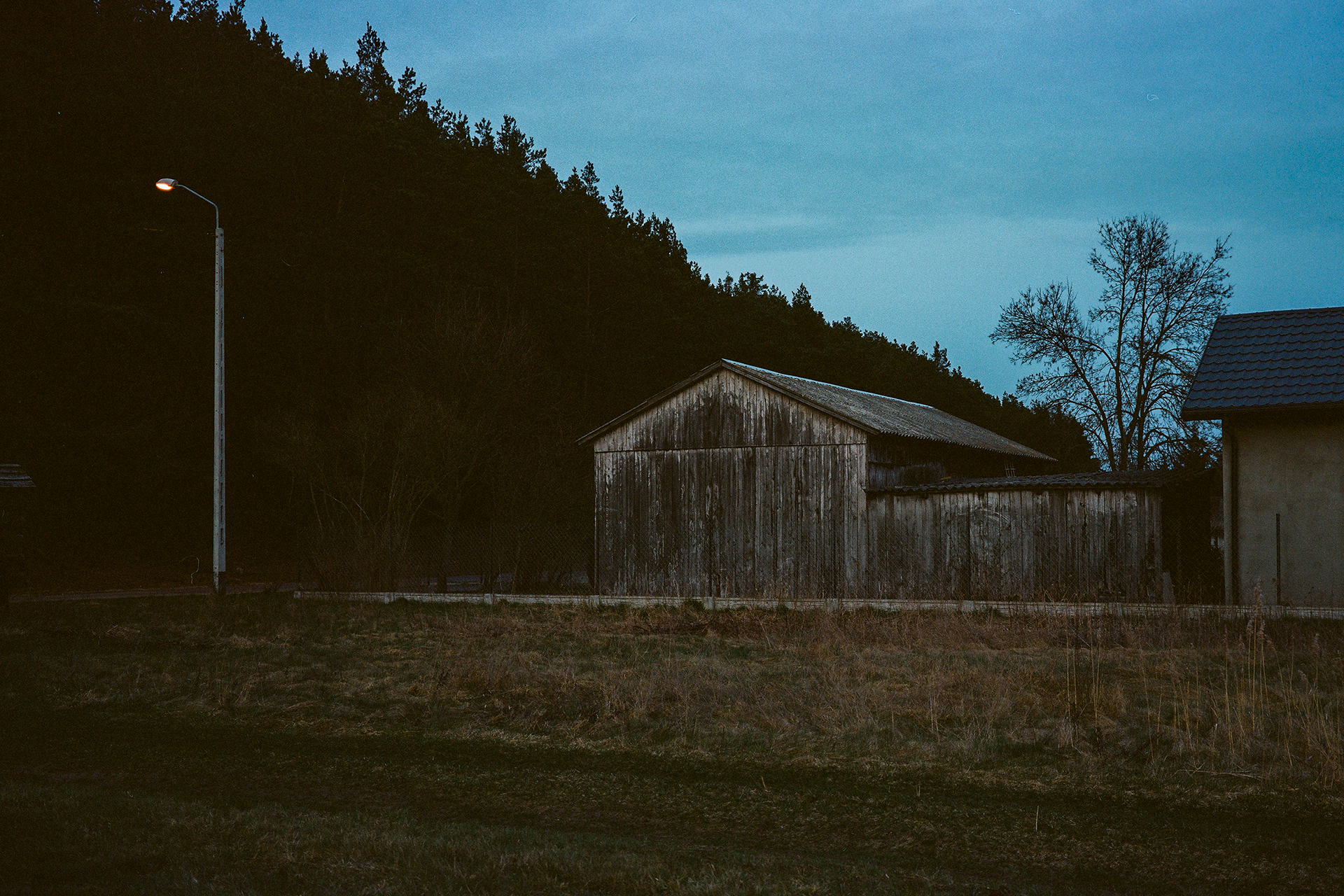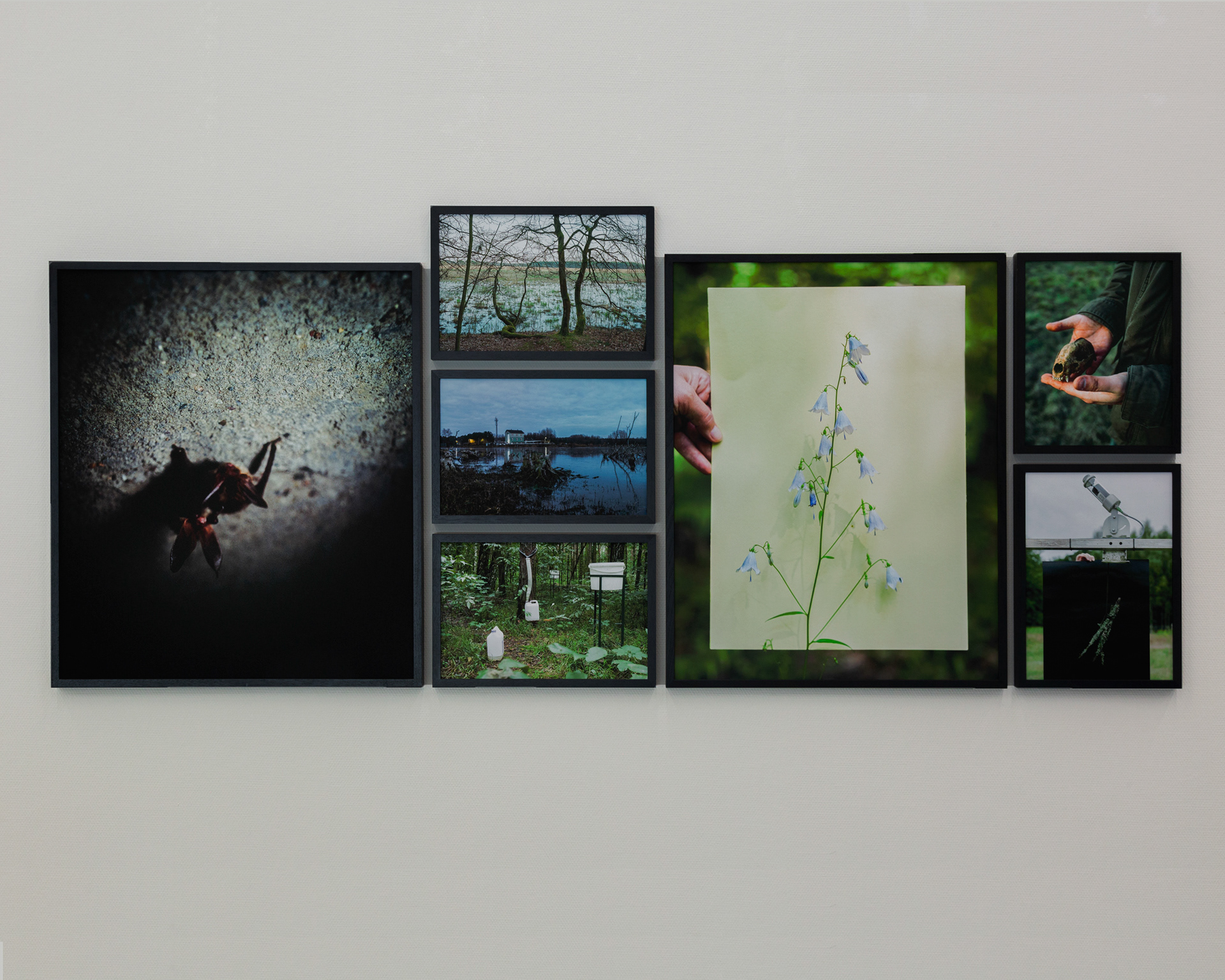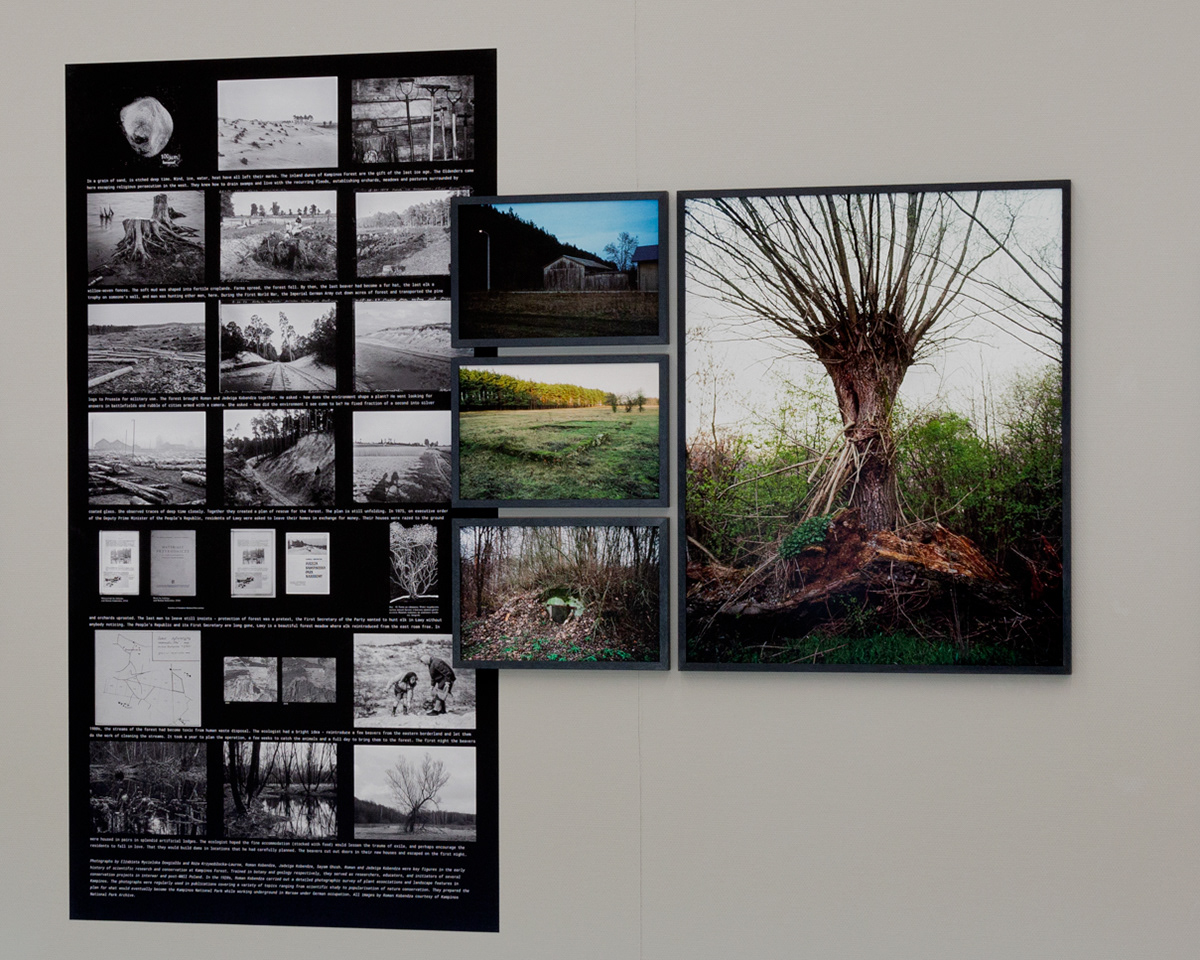Kampinos Forest, located at the gates of Warsaw, is Poland’s second-largest National Park. The forest was on the brink of disappearing due to centuries of agricultural expansion, and destruction wrought by two World Wars. When the Kampinos National Park was established in 1959 there were seventy-one villages with sixteen thousand people within its boundaries, in 2023 there are less than two thousand people left. Inhabitants have been moving out gradually, voluntarily via compensation negotiated with Park authorities. The villages and farmlands are being rewilded into forests. Elk, beaver, and wolf - locally extinct for a century have been reintroduced and are thriving. Despite centuries of human exploitation, remnants of the forest's geologic and primeval past have survived. Multiple layers of time - from post-glacial dune formation, the advent of silviculture and agriculture, to depopulation and rewilding are all visible in small details of this strange landscape. The forest is a haunted space populated by relicts of the past and ghosts of potential futures.
Working in close collaboration with scientists at the National Park, my project aims to explore the unique story of Kampinos Forests’ remarkable regeneration and examine its present and future prospects in a time of planetary ecological crises. Borrowing from the philosopher Timothy Morton’s formulation “Ecological thought is the thinking of interconnectedness” the form of the project is an exploration of interconnectedness, through a patchwork narrative made up of archival photos, maps, synthetic images, texts, and original photography.
"How a Forest Returns" was exhibited at the newly opened Rynek 30 Gallery of the Museum of Warsaw from 22.08.2021 to 30.01.2022. Curated by Jan Brykczyński. Some images from the exhibition:
An updated iteration of "How a Forest Returns" was exhibited at the Museum Belvédère - Heerenveen as part of Noorderlicht Photo Festival 2023. Some installation shots:





